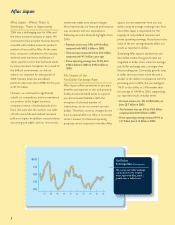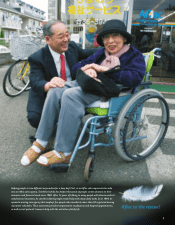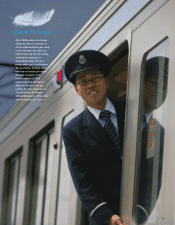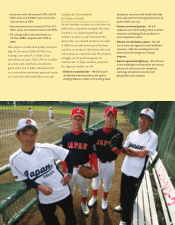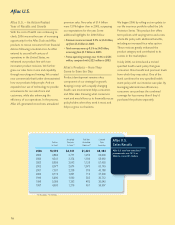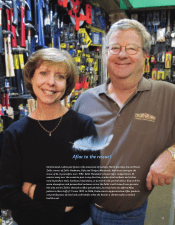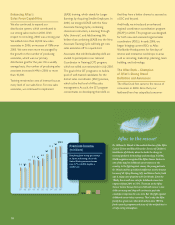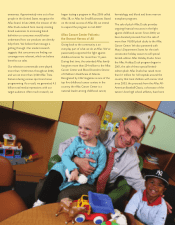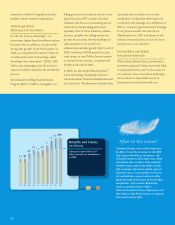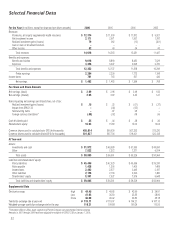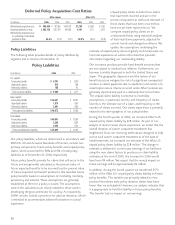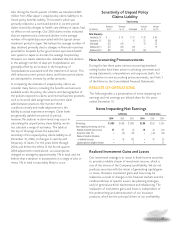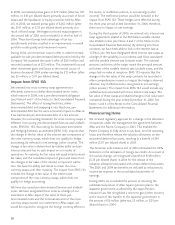Aflac 2006 Annual Report Download - page 22
Download and view the complete annual report
Please find page 22 of the 2006 Aflac annual report below. You can navigate through the pages in the report by either clicking on the pages listed below, or by using the keyword search tool below to find specific information within the annual report.
Premium Income
(In billions)
Benefiting from strong persistency
in Japan and strong sales in the
United States, premium income
rose 2.7% in 2006, despite a
weaker yen.
97 98 99 00 01 02 03 04 05 06
5.9 5.9
7.3
8.2 8.1 8.6
9.9
11.3 12.0 $12.3
Japan U.S.
Enhancing Aflac’s
Sales Force Capabilities
We also continued to expand our
distribution system, which contributed to
our strong sales results in 2006. With
respect to recruiting, 2006 was a strong year.
We added more than 26,100 new sales
associates in 2006, an increase of 7.8% over
2005. We were even more encouraged by
the growth in the number of producing
associates, which was our primary
distribution goal for the year. On a weekly
average basis, the number of producing sales
associates increased 6.4% in 2006 to more
than 10,300.
Training remained an area of intense focus at
every level of our sales force. For new sales
associates, we continued to implement
LEASE training, which stands for Larger
Earnings by Acquiring Smaller Employers. In
2006, we merged LEASE with the New
Associate Training Cycle, combining
classroom instruction, e-learning through
Aflac University®, and field training. We
believe that combining LEASE into the New
Associate Training Cycle will help get new
sales associates off to a quick start.
Associates that exhibit leadership skills are
invited to participate in our national
Coordinator in Training (CIT) program,
which we rolled out nationwide in July 2005.
The goal of the CIT program is to build a
pool of well-trained candidates for the
district sales coordinator (DSC) position,
which is the first level of Aflac sales
management. As such, the CIT program
concentrates on developing their skills so
that they have a better chance to succeed as
a DSC and beyond.
And finally, we introduced an enhanced
regional coordinator accreditation program
(RCAP) in 2006. This program was designed
for both new and seasoned regional sales
coordinators (RSCs). In early 2006, we
began bringing current RSCs to Aflac
Worldwide Headquarters for five days of
intense and interactive workshops in areas
such as recruiting, leadership, planning, team
building, and technology.
The Aflac Duck – Champion
of Aflac’s Strong Brand
Definition and Awareness
The Aflac Duck first came to the rescue of
consumers in 2000. Since then, our
feathered hero has catapulted consumer
18
Aflac to the rescue!
Dr. William G. Woods is the medical director of the Aflac
Cancer Center and Blood Disorders Service of Children’s
Healthcare of Atlanta, where he leads the charge in
treating pediatric hematology and oncology. In 2006,
Child magazine recognized the Aflac Cancer Center as
one of the top five childhood cancer centers in the
country. In the fight against cancer, the young patients
Dr. Woods and his specialized staff treat are the bravest
heroes of all. Ryley Fleming, left, and Xavier Curtis, both
age 3, enjoy some playtime with Dr. Woods. Since the
1960s, the overall cure rate for childhood cancer has
improved from 20% to 75%. The team at the Aflac
Cancer Center knows that one child with cancer is one
child too many, and they will continue to push the
envelope to improve the cure rate. But the fight against
childhood cancer takes resources. That’s why the Aflac
family has given more than $34 million since 1995 to
fund research, programs and state-of-the-art facilities in
a truly caring atmosphere.


